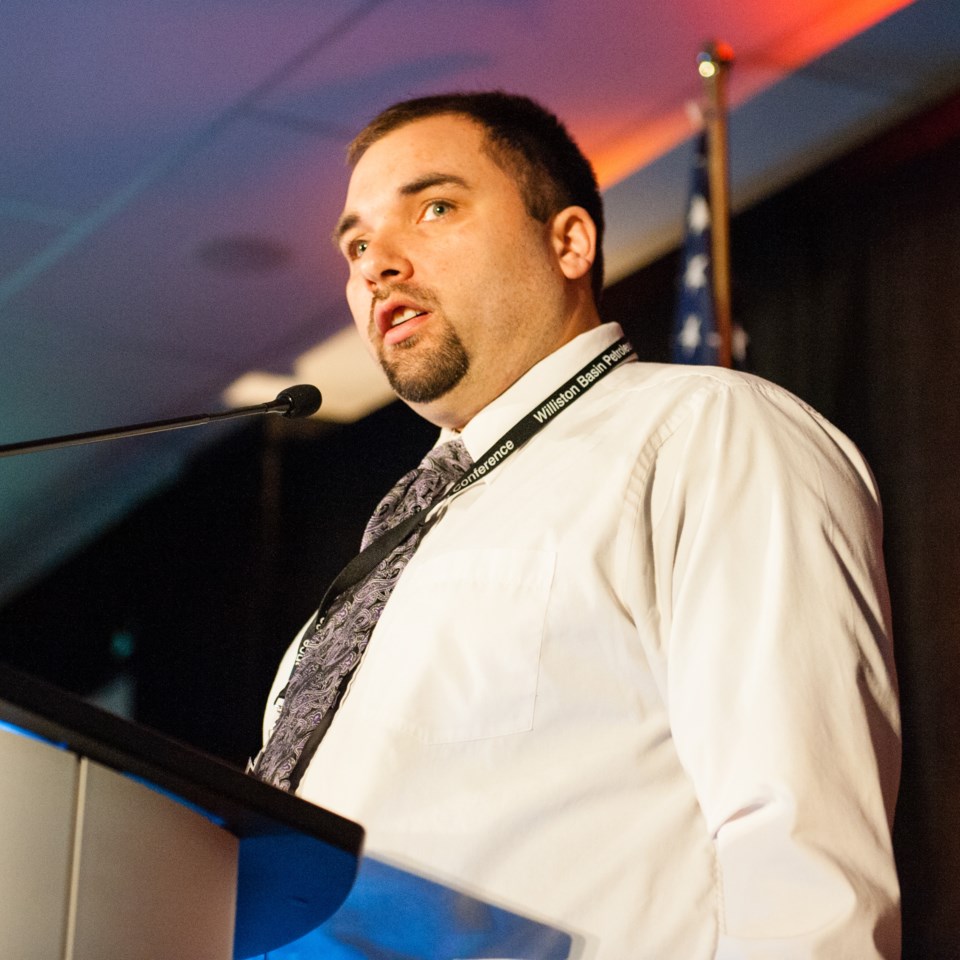Regina– Some companies have been breathing new life into old wells, and seeing good results, by refracking horizontal wells.
That’s was the thrust of Michael Nelson’s presentation to the Williston Basin Petroleum Conference in Regina on May 4.
Nelson works with the Saskatchewan Geological Survey and has a masters degree in chemical and petroleum engineering and specializes in reservoir characterization.
He looked at two areas of Saskatchewan, the Bakken and Viking, using data mining to come up with his results.
“Is this something we can do to promote the ultimate recovery of the province’s resources.
“A refrac is a well that was hydraulically fractured, produced for some time, and then fractured again, whether it is a different interval within the same well, or whether they attempt to refrac the same interval that they had previously fracked, or a combination of the two,” he said.
These were usually attempted after the initial production declined to an economic limit where the well was no longer profitable.
He said IHS estimates up to 11 per cent of horizontal wells will be refracked eventually.
“The nice part about refracs is the capital costs are considerably less than a new drill. Estimates are between 20 and 35 per cent, in my preliminary research,” Nelson said. “The ultimate goal of a refrac is to reinstate the initial well rate. I’ve seen, in my study, that some refracs even met, or exceeded the initial rate of the well. They basically brought that well back to life.”
The study looked at 45 wells in the Bakken and 11 in the Viking. By looking at those numbers, he said, “I’m betting you can guess which one worked better.”
A total of 126 wells were initially considered, but many were filtered out for various reasons, such as acid jobs.
Bakken
There were a whole pile of refracs in 2009, wells that had been initially fracked in 2006, he noted, due to an acquisition in the area.
The refrac restored the rate of one sample well at 1-2-8-9-W2 to the initial rate of that well. It resulted in an incremental 14,000 cubic meters of additional oil due to the refract and waterflood.
Another well at 4-7-8-8-W2 had initial production of 22 cubic metres per day. The refrac brought it back to 20 cubic metres per day. It saw an additional 10,000 cubic meters of oil as of February, 2017.
The average Bakken refrac restored the oil rate to 79 per cent of the initial oil rate, with a median value of 80 per cent of the initial oil rate.
The majority of the wells produced 50 to 100 per cent of the initial rate of production, and a few were as high as 200 to 300 per cent.
Most of the wells were refracked after production dropped below four cubic meters per day. Refracs restored the rate to 15 to 27 cubic metres per day.
It’s not all roses, however. In one case, the refrac completely killed the well. Nelson was not sure why.
Viking
In the Viking, initial completions were from 2010 to 2016. There were improvements, but not as substantial as in the Bakken. Some were very marginal.
In the Viking, the average refrac restored the oil rate to 35 per cent of the initial rate with a median value of 26 per cent of the initial oil rate.
In conclusion, Nelson said the success of refracs is formation dependent. They require less capital to drill. Wells with higher initial rates, or sub-optimal initial completion design show potential. Some oilfield service companies offer services to identify and screen refrac candidates. Falling completion costs would improve refrac project economics.




